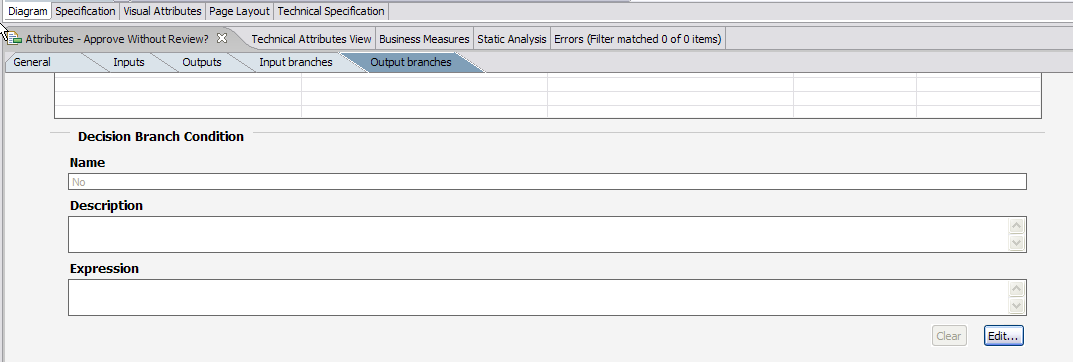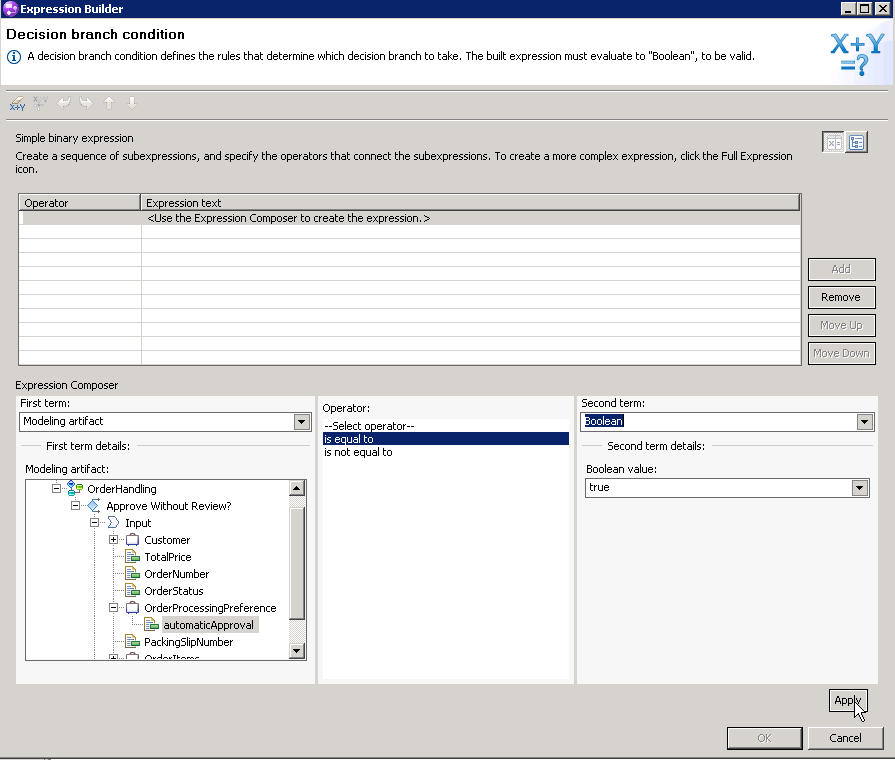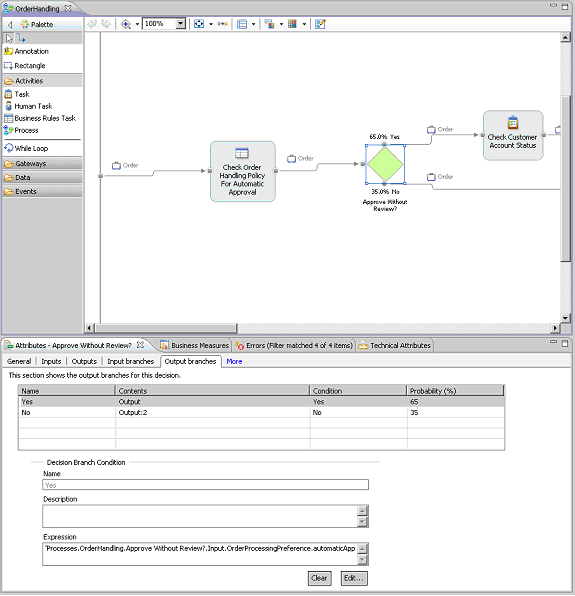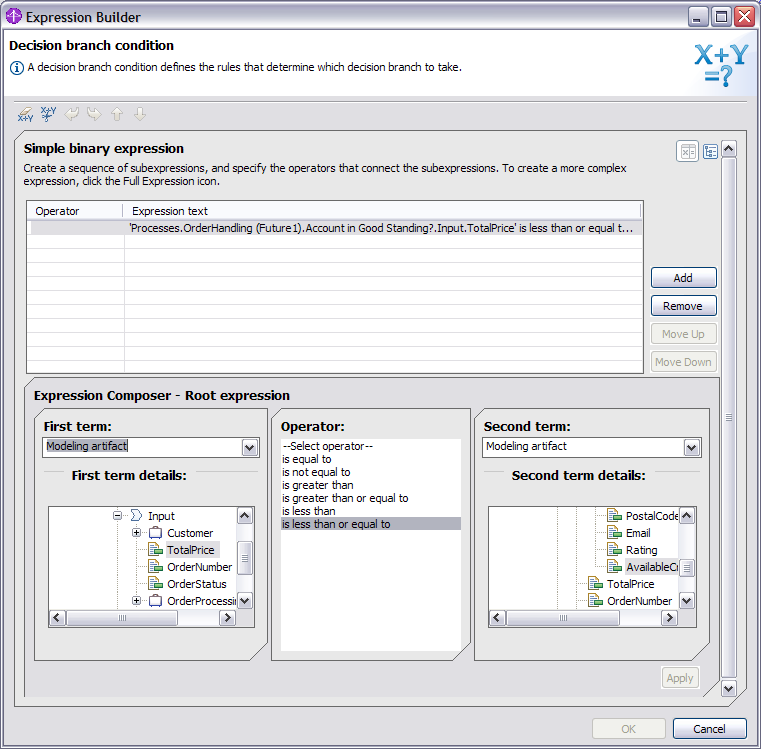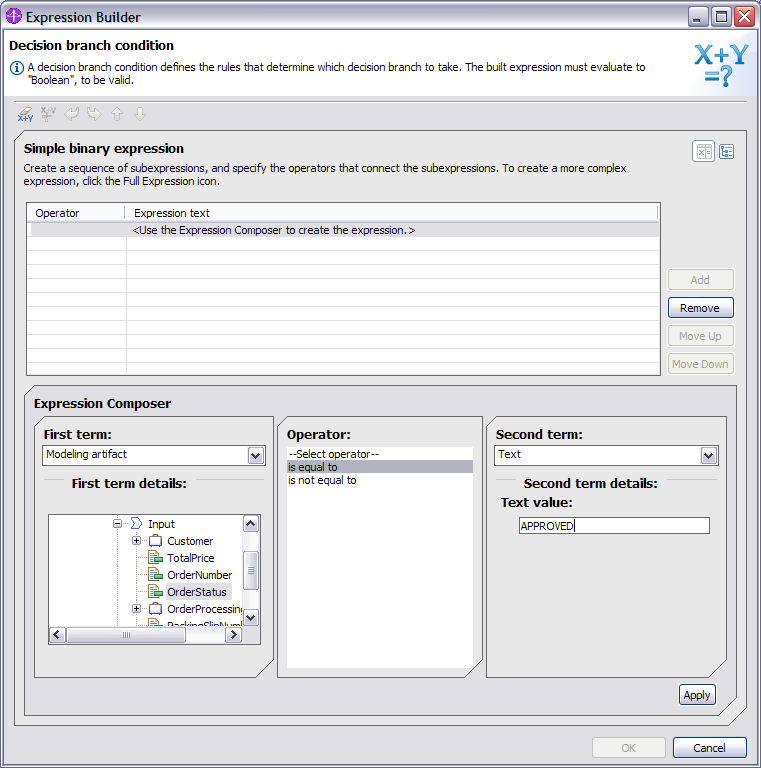In this lesson, you will set the criteria, based on the input data, for which branch to take when decisions are made in the business process.
The decision elements of the process currently have errors because there is no automated way to determine which branch should be taken for a given order.
The branch options are listed in the following table.
Table 1. Summary of Decision Criteria| Decision |
Criteria |
|---|
| Approve without Review? |
The previous task set the value of the OrderProcessingPreference - automaticApproval input field. Check if this field is true or false. If this field is true, then the order is automatically approved. If this field is false then the order must be reviewed before it is approved. |
| Account in Good Standing? |
Check whether the total price of the order is less than the customer's available credit. |
| Acceptable Credit Risk? |
In the previous task, the reviewer sets the value of the OrderStatus field. Check this field for APPROVED. |
- In the process diagram, click the Approve Without Review? simple decision. In the Attributes view, click the Attributes – Approve without Review? tab and then click the Output branches tab.
- Click the Yes cell and change the probability field to 65. Similarly, change the No probability field to 35. These probabilities are used during simulation.
- Click the Yes cell again. Scroll down to the Expression field and click Edit (you can size the panes in the 4-pane layout by selecting and dragging the borders). The Expression Builder wizard opens.
- In Expression Builder, complete the following steps:
- Click Add.
- Under the Expression Composer, ensure Modeling artifact is selected as the first term. Expand and select automaticApproval.
- For Operator, select is equal to.
- For the second term, select Boolean and set the Boolean value to true.
- Click Apply, and then click OK. You might need to scroll down to find the OK button.
- In the process diagram, click the Account in Good Standing? simple decision. In the Attributes view, click the Output branches tab and change the Yes probability to 85 and the No probability to 15.
- Select the Yes line, scroll down and click Edit under the Expression field.
- In the Expression Builder, complete the following steps:
- Click Add.
- Ensure that Modeling artifact is selected as the first term. Under First term details, expand Input and select TotalPrice.
- For the Operator, select is less than or equal to.
- For the second term, select Modeling artifact and then expand and select AvailableCredit.
- Click Apply, click OK, and then save your work.
- Click the Acceptable Credit Risk? task. In the Attributes view, select the Output branches tab. Make the following changes:
- Change the Yes probability to 70 and the No probability to 30.
- Select the Yes line, scroll down and click Edit under the Expression field.
- In Expression Builder, complete the following steps:
- Click Add.
- Ensure Modeling artifact is selected as the first term. Under First term details expand and select OrderStatus.
- For Operator, select is equal to.
- For the second term, select Text and enter the value as APPROVED.
- Click Apply, click OK, and then save your work. You should have no more errors (red Xs) on the decision elements of your process diagram.

